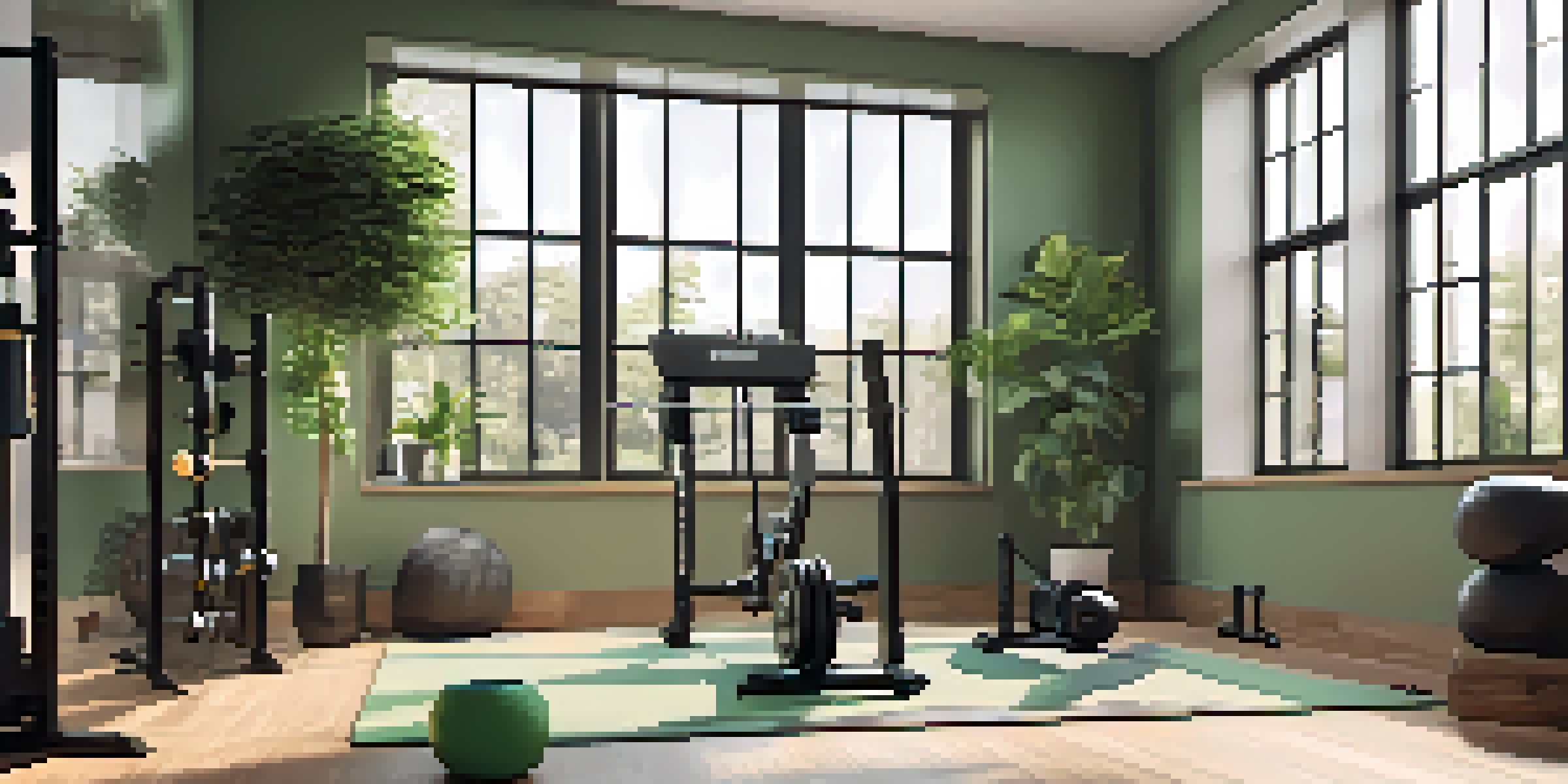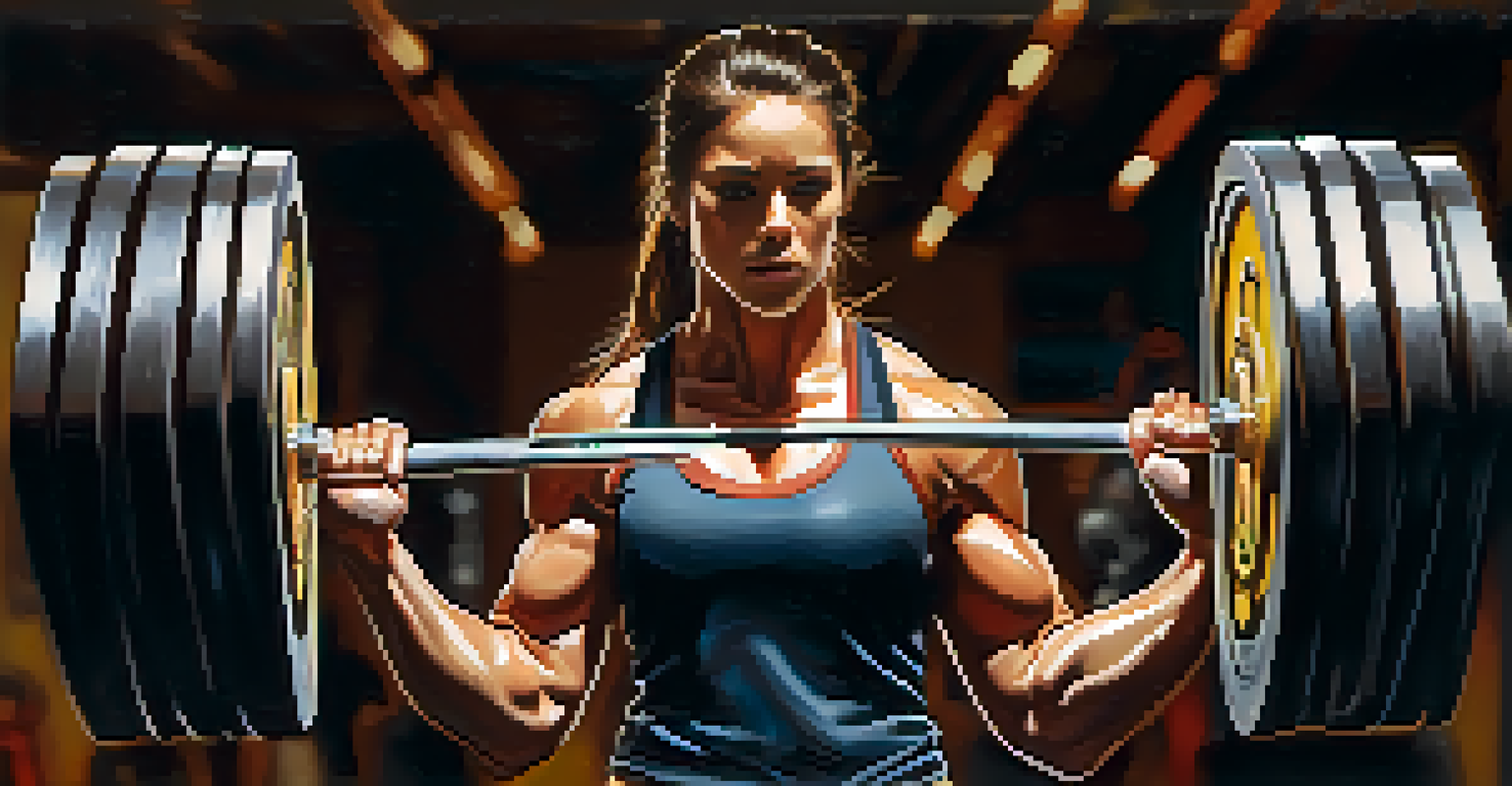Integrating Powerlifting Movements in Rehab for Lower Back Pain

Understanding Lower Back Pain and Its Causes
Lower back pain is a common issue that affects millions of people. It can stem from various sources, including poor posture, muscle imbalances, or even injuries. Understanding the root cause of your pain is essential for effective rehabilitation, as it allows you to tailor your approach to healing.
Strength does not come from physical capacity. It comes from an indomitable will.
Many individuals might think that lifting weights could exacerbate their pain, but powerlifting, when done correctly, can actually help strengthen the muscles supporting the spine. This strength can lead to better posture and reduced pain over time. The key is to integrate these movements thoughtfully into your rehab program.
It's also important to consult with a healthcare professional before starting any new exercise regimen, especially if you're dealing with chronic pain. They can provide insights into your specific condition and help you design a safe and effective plan.
The Benefits of Powerlifting for Rehabilitation
Powerlifting focuses on three main lifts: the squat, bench press, and deadlift. These movements are not only about lifting heavy weights; they promote functional strength that can translate into everyday activities. For instance, a strong squat can make sitting and standing easier, reducing strain on your back.

Another benefit of powerlifting is its emphasis on proper technique. Learning to lift with correct form can help you avoid further injuries and ensure that you’re engaging the right muscle groups. This attention to detail is crucial when you're recovering from lower back pain.
Powerlifting Aids Lower Back Rehab
Incorporating powerlifting exercises can strengthen the muscles supporting your spine, ultimately reducing lower back pain.
Incorporating powerlifting movements into your rehab can also boost your confidence. As you progress and lift heavier weights, you’ll likely feel more empowered and capable, which can positively impact your mental well-being during recovery.
Starting with Basic Movements: Safety First
Before diving into powerlifting, it's essential to start with basic movements that emphasize core stability and proper form. Exercises such as planks, glute bridges, and bodyweight squats can help build a solid foundation. These movements prepare your body for more complex lifts without putting unnecessary strain on your lower back.
The greatest wealth is health.
Always prioritize safety by focusing on lighter weights and higher repetitions initially. This approach allows you to gauge your comfort level and make adjustments as needed. Gradually increasing the weight will help you build strength without risking injury.
Consider working with a qualified trainer who understands powerlifting and rehabilitation. Their guidance can help ensure you’re using the correct form and making steady progress, which is particularly vital when dealing with past injuries.
Integrating Powerlifting into Your Rehab Program
Once you’re comfortable with basic movements, it’s time to integrate powerlifting exercises into your rehab program. Start with the deadlift, as it engages multiple muscle groups, including the core, glutes, and hamstrings. When performed correctly, it can strengthen the muscles that support your lower back.
Next, consider adding the squat, which is excellent for building lower body strength. Make sure to focus on maintaining a neutral spine throughout the movement to avoid additional strain. It’s all about finding that balance between challenging yourself and listening to your body.
Start with Safety and Basics
Focusing on core stability and proper form through basic movements is crucial before advancing to more complex lifts.
Remember to incorporate rest and recovery into your program. Allowing time for your muscles to heal and adapt is just as crucial as the lifting itself. This balanced approach will help you achieve long-term success in managing lower back pain.
Monitoring Progress and Adjusting Your Routine
As you integrate powerlifting into your rehab, it's important to regularly monitor your progress. Keep track of the weights you lift, how you feel during and after workouts, and any changes in your pain levels. This information will help you and your trainer make informed decisions about your routine.
If you notice any increase in pain or discomfort, don't hesitate to adjust your approach. This might mean reducing the weight, changing your form, or even taking a step back to focus on fundamental movements. Your body knows best, so listening to it is key.
Setting realistic goals can also motivate you to stay on track. Celebrate small victories, whether it’s lifting a certain weight or achieving better form. These milestones can keep your spirits high and remind you that you're making progress, even on tougher days.
The Role of Mobility and Flexibility in Rehab
While powerlifting emphasizes strength training, mobility and flexibility are crucial components of a well-rounded rehab program. Incorporating stretching and mobility work can help improve your range of motion and reduce tightness in the muscles surrounding your lower back.
Dynamic stretches, such as leg swings and hip circles, can be performed before workouts to prepare your body for lifting. Meanwhile, static stretches, like hamstring and quadriceps stretches, are great for post-workout recovery. These practices can enhance your overall performance and minimize the risk of injury.
Monitor Progress and Adjust Plans
Regularly tracking your progress and adjusting your routine based on your body's feedback is essential for effective rehabilitation.
Consider adding yoga or Pilates to your routine as well. Both practices emphasize core strength and flexibility, making them excellent complements to your powerlifting regimen. This holistic approach not only aids in recovery but promotes long-term back health as well.
Embracing a Holistic Approach to Recovery
Integrating powerlifting into your rehab program is just one piece of the puzzle. A holistic approach that includes nutrition, stress management, and mental well-being can significantly enhance your recovery process. Eating a balanced diet rich in nutrients supports muscle repair and overall health.
Additionally, managing stress levels through techniques like mindfulness or meditation can help reduce tension in the body. When you're less stressed, your muscles can relax, which may alleviate some of the pain you feel in your lower back.

Finally, surround yourself with a supportive community, whether it's friends, family, or fellow lifters. Sharing your journey and learning from others can provide motivation and encouragement, making the recovery process feel less isolating.